Order in Science
Order in science refers to the arrangement or sequence of events, objects, or processes in the natural world. It helps scientists to organize and understand the phenomena they observe. Understanding order is crucial in various scientific disciplines, including biology, chemistry, physics, and earth sciences.
Types of Order in Science
There are several types of order that are important in science:
- Numerical Order: This refers to arranging objects or events in sequence based on numbers or quantities.
- Chronological Order: This involves organizing events or processes based on their time sequence.
- Classification Order: This includes grouping objects or organisms based on their shared characteristics.
- Structural Order: This refers to the arrangement of parts within a system or organism.
Examples of Order in Science
Examples of order in science can be found in various phenomena and processes:
- Cell Division: The process of cell division occurs in a specific order: prophase, metaphase, anaphase, and telophase.
- Rock Strata: In geology, rock strata are arranged in chronological order, with the oldest layers at the bottom and the youngest layers at the top.
- Periodic Table: The elements in the periodic table are arranged in numerical order based on their atomic numbers.
- Food Chain: In ecology, the sequence of organisms in a food chain represents a specific order of energy transfer.
Studying Order in Science
To understand the concept of order in science, students can engage in various activities and exercises:
- Sequencing Activities: Students can practice sequencing events or processes in various scientific phenomena, such as the life cycle of a plant or the water cycle.
- Classification Exercises: Students can classify objects or organisms based on specific characteristics, such as sorting animals into different groups based on their habitats.
- Observation and Recording: Students can observe natural phenomena and record the sequence of events or patterns they observe, such as the phases of the moon or the growth of a seed into a plant.
Understanding order in science is essential for making sense of the natural world and for conducting scientific investigations and experiments.
[Order] Related Worksheets and Study Guides:
.◂Science Worksheets and Study Guides Fourth Grade. Plant Structure and function
Study Guide Plant Structure and function
Plant Structure and function  Worksheet/Answer key
Worksheet/Answer key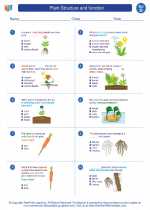 Plant Structure and function
Plant Structure and function  Worksheet/Answer key
Worksheet/Answer key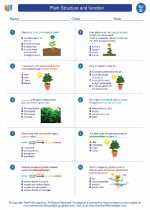 Plant Structure and function
Plant Structure and function  Worksheet/Answer key
Worksheet/Answer key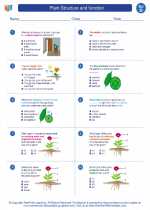 Plant Structure and function
Plant Structure and function  Vocabulary/Answer key
Vocabulary/Answer key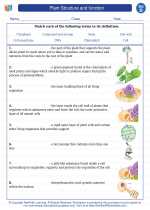 Plant Structure and function
Plant Structure and function  Vocabulary/Answer key
Vocabulary/Answer key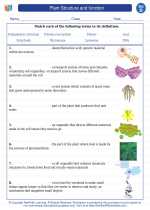 Plant Structure and function
Plant Structure and function  Vocabulary/Answer key
Vocabulary/Answer key Plant Structure and function
Plant Structure and function  Vocabulary/Answer key
Vocabulary/Answer key Plant Structure and function
Plant Structure and function 

 Worksheet/Answer key
Worksheet/Answer key
 Worksheet/Answer key
Worksheet/Answer key
 Worksheet/Answer key
Worksheet/Answer key
 Vocabulary/Answer key
Vocabulary/Answer key
 Vocabulary/Answer key
Vocabulary/Answer key
 Vocabulary/Answer key
Vocabulary/Answer key
 Vocabulary/Answer key
Vocabulary/Answer key

The resources above cover the following skills:
LIFE SCIENCE (NGSS)
From Molecules to Organisms: Structures and Processes
Students who demonstrate understanding can:
Construct an argument that plants and animals have internal and external structures that function to support survival, growth, behavior, and reproduction.